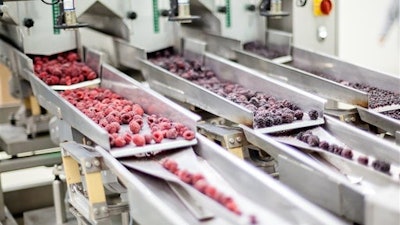
While artificial Intelligence (AI) has proven to be a boon for many industries, it can carry additional risks beyond just business interruption. Job loss is a significant consequence, as AI use in food processing is expected to grow another 45% between now and 2026. That means assembly line job losses will continue to escalate.
Cyber breaches are another risk to employing AI in food processing. As soon as your plant is dependent on AI, ransomware is suddenly possible. When machines were operated manually, a breach only affected your data. With AI, your entire operation could be tackled by a remote bad actor.
The question is, do the benefits outweigh the risks?
When it comes to food processing, the two biggest benefits to engaging AI are improved quality and safety.
Improved quality
Churning out a consistent looking, tasting and textured product is a chief goal of food processing operations. While 90% of product sorting worldwide was still done by humans at the end of the 20th century, today’s AI capabilities far surpass what humans can do on an assembly line.
Food processing AI has learned to measure food moisture levels and even smells with greater consistency. AI cameras are taught to grade the marbling of a ribeye based on its fat content by comparing a live steak on the assembly line to photos of previously graded steaks. Nuts like almonds and pistachios are similarly graded by AI.
Improved safety
AI sensors like optical florescent imaging and ultrasonic sensing technology are now employed to recognize food residue on equipment, which can contaminate an entire product line. AI technology is also being used to make sure workers have their personal protective equipment (PPE) to do temperature checks and grade food cleanliness, similar to quality grading.
Getting the most out of AI while reducing your risk
When increasing food safety and quality with AI, it’s critical to consider AI risk mitigation simultaneously as well.
The first step is to create a path to organizational resilience across the processing plant. Making sure your IT department understands your use of AI and assesses the risk of data breach or the potential for equipment hacking and has a plan to prevent them both. Once the IT team is aware of the increased risk, put an operational plan in place for loss or downtime of equipment. If the AI equipment goes down, what is the plan? Is it possible to still get the job done manually? What does AI-caused business interruption look like?
Secondly, offload your business’ risk to the right insurance coverage. Make sure your product liability, general liability, property policy, cyber and more cover the AI you’re employing. If they don’t, add them. Find out what the trigger threshold would be for a claim.
AI also has the potential to reduce coverage costs because it can be used to conduct predictive maintenance or determine when equipment needs to be serviced before it breaks down. In some cases, underwriters may ask to access a food processor’s refrigeration temperature sensors to confirm the equipment’s viability in real time. This type of information access has the ability to reduce coverage costs.

















